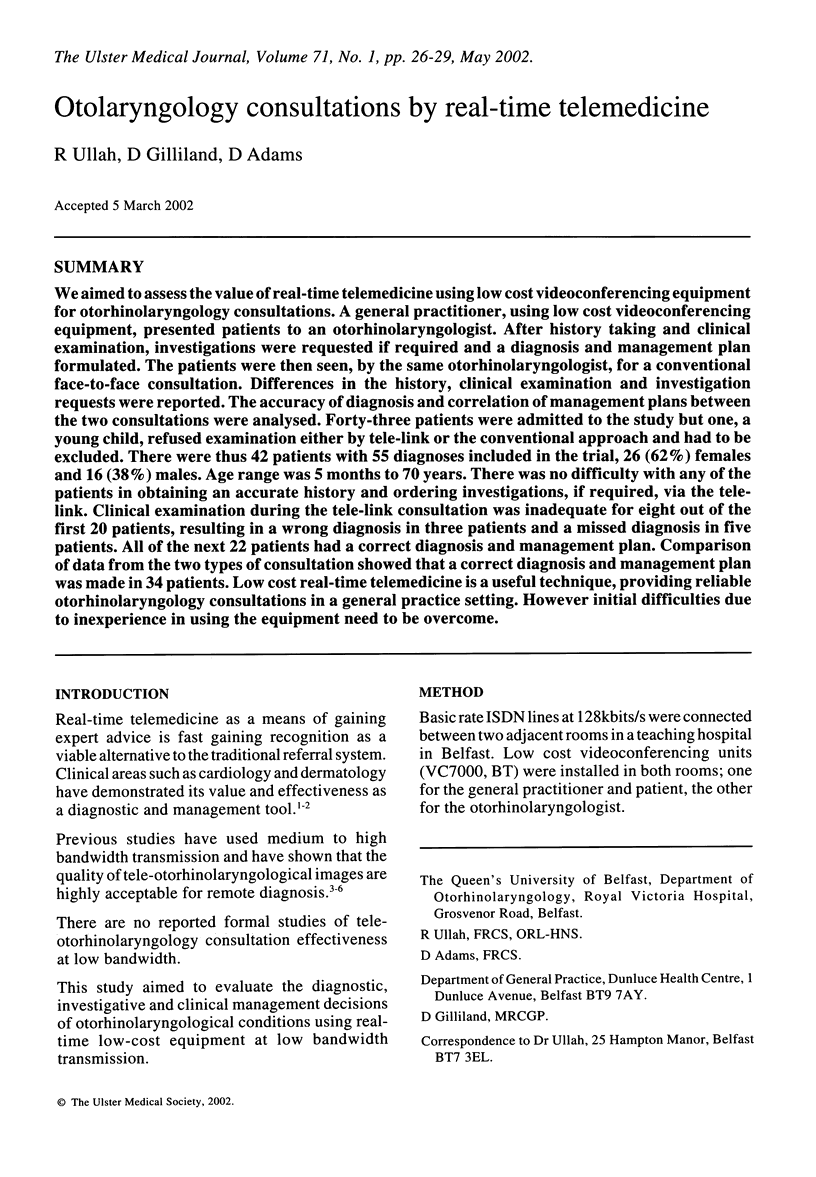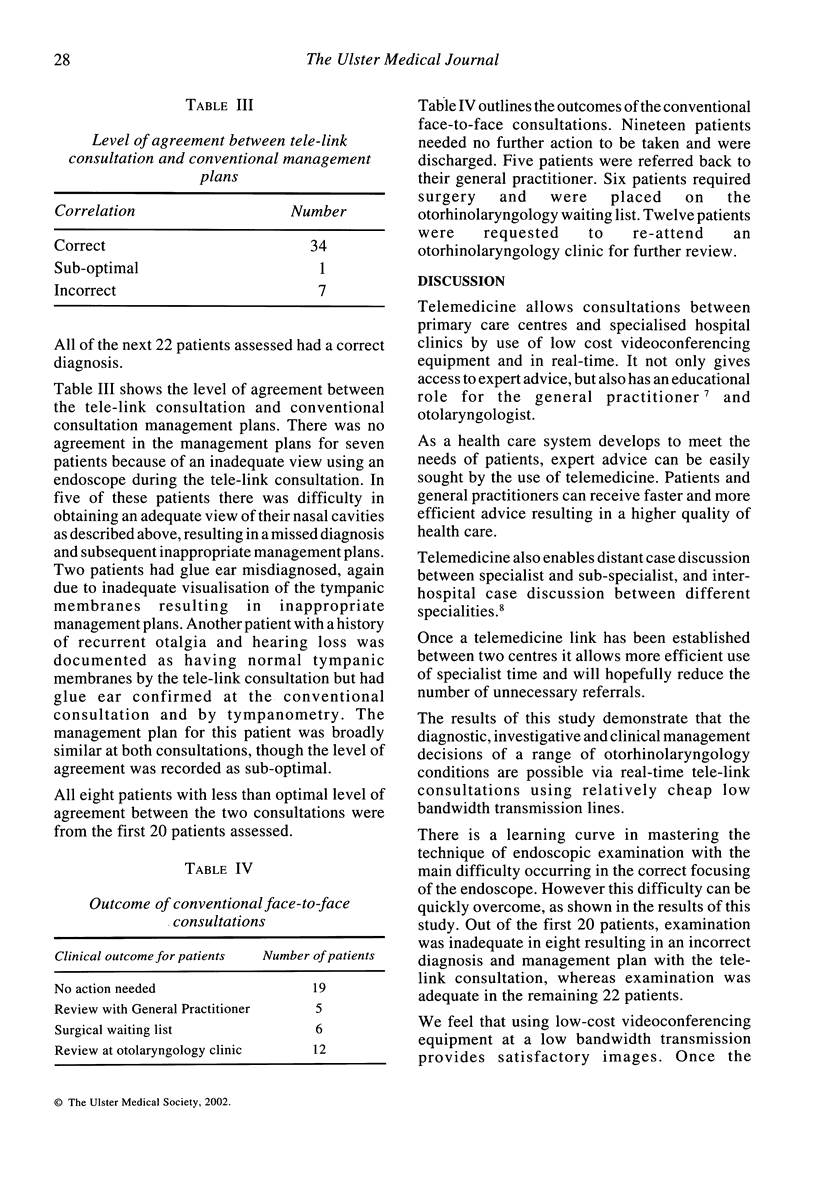Abstract
We aimed to assess the value of real-time telemedicine using low cost videoconferencing equipment for otorhinolaryngology consultations. A general practitioner, using low cost videoconferencing equipment, presented patients to an otorhinolaryngologist. After history taking and clinical examination, investigations were requested if required and a diagnosis and management plan formulated. The patients were then seen, by the same otorhinolaryngologist, for a conventional face-to-face consultation. Differences in the history, clinical examination and investigation requests were reported. The accuracy of diagnosis and correlation of management plans between the two consultations were analysed. Forty-three patients were admitted to the study but one, a young child, refused examination either by tele-link or the conventional approach and had to be excluded. There were thus 42 patients with 55 diagnoses included in the trial, 26 (62%) females and 16 (38%) males. Age range was 5 months to 70 years. There was no difficulty with any of the patients in obtaining an accurate history and ordering investigations, if required, via the telelink. Clinical examination during the tele-link consultation was inadequate for eight out of the first 20 patients, resulting in a wrong diagnosis in three patients and a missed diagnosis in five patients. All of the next 22 patients had a correct diagnosis and management plan. Comparison of data from the two types of consultation showed that a correct diagnosis and management plan was made in 34 patients. Low cost real-time telemedicine is a useful technique, providing reliable otorhinolaryngology consultations in a general practice setting. However initial difficulties due to inexperience in using the equipment need to be overcome.
Full text
PDF



Selected References
These references are in PubMed. This may not be the complete list of references from this article.
- Burgess L. P., Holtel M. R., Syms M. J., Birkmire-Peters D. P., Peters L. J., Mashima P. A. Overview of telemedicine applications for otolaryngology. Laryngoscope. 1999 Sep;109(9):1433–1437. doi: 10.1097/00005537-199909000-00014. [DOI] [PubMed] [Google Scholar]
- Casey F., Brown D., Craig B. G., Rogers J., Mulholland H. C. Diagnosis of neonatal congenital heart defects by remote consultation using a low-cost telemedicine link. J Telemed Telecare. 1996;2(3):165–169. doi: 10.1258/1357633961930004. [DOI] [PubMed] [Google Scholar]
- Heneghan C., Sclafani A. P., Stern J., Ginsburg J. Telemedicine applications in otolaryngology. IEEE Eng Med Biol Mag. 1999 Jul-Aug;18(4):53–62. doi: 10.1109/51.775489. [DOI] [PubMed] [Google Scholar]
- Pedersen S., Hartviksen G., Haga D. Teleconsultation of patients with otorhinolaryngologic conditions. A telendoscopic pilot study. Arch Otolaryngol Head Neck Surg. 1994 Feb;120(2):133–136. doi: 10.1001/archotol.1994.01880260005002. [DOI] [PubMed] [Google Scholar]
- Phillips C. M., Burke W. A., Shechter A., Stone D., Balch D., Gustke S. Reliability of dermatology teleconsultations with the use of teleconferencing technology. J Am Acad Dermatol. 1997 Sep;37(3 Pt 1):398–402. doi: 10.1016/s0190-9622(97)70139-7. [DOI] [PubMed] [Google Scholar]
- Stern J., Heneghan C., Sclafani A. P., Ginsburg J., Sabini P., Dolitsky J. N. Telemedicine applications in otolaryngology. J Telemed Telecare. 1998;4 (Suppl 1):74–75. doi: 10.1258/1357633981931551. [DOI] [PubMed] [Google Scholar]


